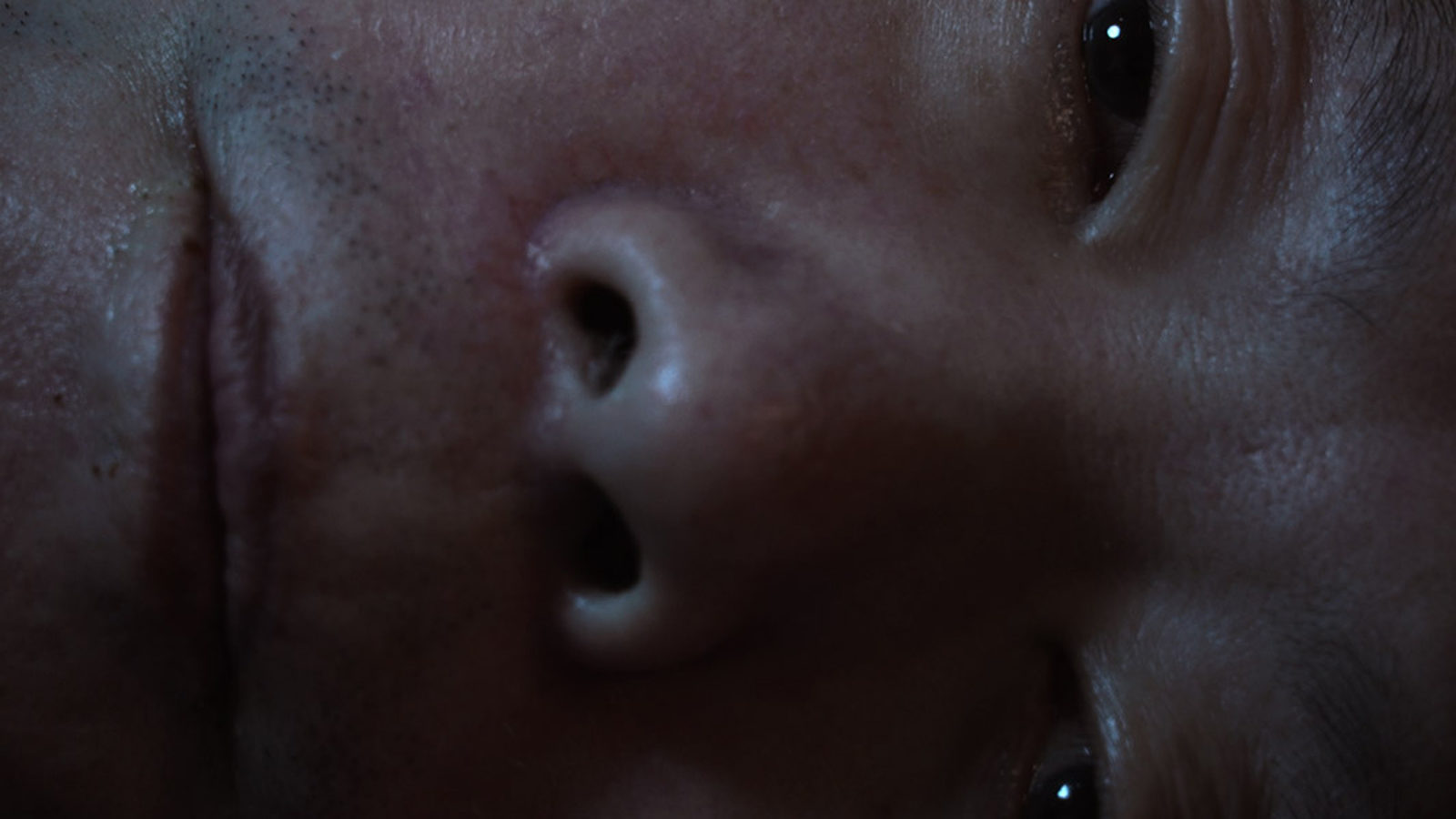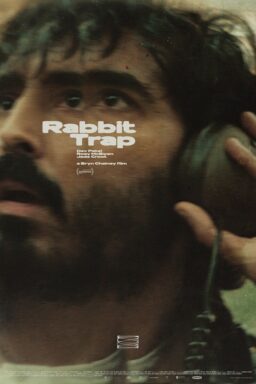Back in 2014, I interviewed Kent Jones, the director of the New York Film Festival, and he mentioned that he’d noticed that the aggression between civic-minded audience members and the directors presenting controversial work had more or less subsided. People don’t come to pick fights with the filmmakers like they used to. Jean-Luc Godard and Woody Allen wouldn’t show up even if you paid them, and the taste of the selection committee doesn’t tend to run more controversial than that. Maybe it’s nostalgia for the old rabble-rousing that led them to book “Caniba,” the latest from the Harvard Sensory Ethnography Lab, a group dedicated to submerging audiences in borderline uncanny presentations of alternative cultural experiences. The lab, responsible for such diverse works as “Leviathan” and “Manakamana,” have broken new formal grounds over the last half-decade or so. Directors Lucien Castaing-Taylor and Véréna Paravel are the public face of the lab, having collaborated on a half-dozen documentary projects since “Leviathan” introduced the world to the lab’s experimental working methods and avant-garde editing strategies.
“Caniba” is no “Leviathan,” but there is something undeniably fascinating at work. There were dozens of walkouts during the meagerly attended press screening and a friend got sick at about the halfway point and had to leave to get some fresh air. It’s definitely the sort of film you need a kind of coping mechanism to get through (critic Matt Prigge and I would occasionally whisper references back and forth about the Richard Dreyfuss movie “Krippendorf's Tribe” just to keep the film’s astonishing bleakness from fully settling in). As its title suggests, “Caniba” is about one of the few cannibals living among us. In the ‘80s. Issei Sagawa was living in Paris and had an unhealthy fixation on his roommate Renée Hartevelt. One day he got tired of being turned down so he killed her. Then he ate most of her. There’s a bit of text at the opening explaining the complicated legal nonsense that allowed Sagawa to be extradited back to Japan into the care of his brother Jun, and a little more explaining that the filmmakers don’t condone his crime. When you dig a little into the details and see how well-known, well-documented and sensationalized his life and crimes have been, that’s a queasiness all its own. Sure, America practically built an industry around O.J. Simpson, but this guy not only never denied killing his victim, he’s made graphic novels dictating the post-murder violation. Sagawa already has one documentary detailing his exploits, 2007’s preposterous “The Cannibal That Walked Free,” and now we have “Caniba” to further explore his existential freefall. The only thing he doesn’t have is a novelty lunchbox.
The film asks a lot of its audience, more than any previous HSEL project. It’s 90 minutes that does little else but stare unblinkingly at the warped, weathered face of Sagawa as he undergoes medical treatment and has long halting conversations with his brother. The film asks probing questions about the identity of the post-war Japanese male, the depths of the empathetic imagination, and whether societal boundaries are needed to get a grip on humanity. Sagawa was never convicted so he’s not technically a criminal, so naturally I thought long and hard about our President and Harvey Weinstein while staring at this grinning sociopath’s mask-like features. One man’s monster is another’s celebrity. The issue, as usual, is that very few people who could benefit from this film’s grueling lessons will ever see it, and those of us who braved the whole thing had likely already seen the grizzly likes of “Cannibal Ferox,” “Men Behind the Sun” or “Goodbye Uncle Tom”—films that require you to see life as a prop in a narrative, rather than an end unto itself. As Jun, who seems like the normal brother until he brings out the knives and barbed wire to pleasure himself, flips through the pages of his brother’s graphic novel, trying to reconcile the monster on the page with the little boy from their home movies, you can’t help but ask yourself some dark things. Victims too rarely get to tell their stories. I don’t know that what we need right now is to sympathize with monsters. Maybe in a decade I’ll be ready to treat “Caniba” fairly. Right now, all I can think about is that Renée Hartevelt won’t get a movie.
Thankfully there’s always some clever counter-programming. Ben Russell’s typically brutal ethnographic puzzle “Good Luck,” about miners in Serbia and Suriname, gives a Marxist buttress to a forgotten working class, literally working under the earth for capitalist structures that couldn’t make less sense under the din of jackhammers. Watching these men smoke and laugh with each other stuns and humbles. Their leisure, so hard fought, every cigarette under a thousand feet of rock, briefly stems the tide of a hopeless, mechanical dive towards the end of industry. Russell stares long into the face of the casually oppressed, finding tired hope in each rock-bitten face.
Kevin Jerome Everson’s lovely “Tonsler Park” (a great hangover movie if ever there was one) gave me a much-needed dose of easy humanity after the insanely morbid “Caniba.” It shows the faces of volunteers on election day 2016 working in a Charlottesville polling center. The array of beautiful, largely black faces doing their part to help democracy can’t help but fill you with pride and joy, even though we know how that story ended. These people cared. And Everson cares about them, letting his grainy black and white camera capture them for ten minutes or more at a time. It gives them a full portrait just by letting them exist in a common element. Everson’s been making charming experimental documentaries of this sort for over a decade and he never looks like he’s breaking a sweat. His charming and vivacious images just seem to spill out of his camera.

Conversely, all Ismael Vuillard, the hero of Arnaud Desplechin’s whirlwind new feature “Ismael’s Ghosts,” seems to do is sweat. The fictitious filmmaker, played by Mathieu Amalric, a stalwart who couldn’t possibly have too many superlatives heaped upon him, is in a full-blown midlife crisis meltdown. He’s still writing his new film, which has already started shooting, his first wife, who’s been missing and believed dead for twenty years, crashes his vacation with his new girlfriend, his family hates him, and his mentor is dying. “Ismael’s Ghosts” is a sort of sequel to Desplechin’s 2004 film “Kings and Queen,” which means he’s back to indulging his frantic, cinephilia-crazed side after the relative calm and romance of “My Golden Days,” “The Forest” and “Jimmy P.”
Amalric plays two different Desplechin stand-ins in his films. In “My Golden Days” and “My Sex Life (Or How I Got Into An Argument),” he plays Paul Dedalus the roguish academic. In “Kings and Queen” and “Ismael’s Ghosts,” he’s Ismaël Vuillard, the high-strung film director with too many demons and ideas for his own good (he brings those two strands together in “A Christmas Tale,” which on some days strikes me as his best film). In Vuillard, Desplechin gets to indulge his wildest, most unruly filmmaker fantasies. He’s the tempestuous genius, sleeping with his lead (Alba Rohrwacher), his girlfriend (Charlotte Gainsbourg), and his wife’s ghost (Marion Cotillard), all while dictating a far-too-complicated movie about his estranged brother (Louis Garrel), a diplomat who becomes a spy. The film is flush with stylistic elegance and brio. Desplechin manages each fraying narrative thread through grounding innovation and intimacy. Just when the film seems to be getting away from him, it slows and he somehow finds a new way to film two lovers stripping each other’s clothes off.
To return to Jones a moment, he introduced his friend and collaborator (the two worked on the script for “Jimmy P.” together) at the Alice Tully Hall premiere of “Ismael’s Ghosts” and he seemed almost at a loss for words. He so clearly reveres and loves the man, whose work (“I’ll just say it, Shakespearean … ” he giddily intoned) continues to beguile almost 30 years after his debut. Cotillard is the best she’s been in I can’t remember how long and Gainsbourg is so natural as a shy, lonely woman you forget she’s worked for Lars von Trier. Burning with the intensity of other films-about-art like “Pola X,” “The Stunt Man” and “8½,” Desplechin’s film turns a personal crisis into an artistic one. His feelings betray him, then his creative drive does the same. How better for a filmmaker with such acuity to dramatize the storminess of a long-lost love returning in the middle of a new relationship than by showing his growing dissatisfaction with his own gift. The relationships and the runaway production mirror each other until his put-upon line producer (Hippolyte Girardot) has to tie him to a bed and force him to complete the film and repair his emotional life.

One senses that Claire Denis’ latest marvel (“Let the Sunshine In” or “Bright Sunshine In,” as the subtitles would have it) is similarly autobiographical. Juliette Binoche plays a painter of some renowned trying to date men her age and having no luck. They’re alternately boorish, self-involved, socially tone deaf, unromantic, too reserved or too guarded. The men, played by welcome faces like Xavier Beauvois, Alex Descas, Bruno Podalydès, Nicolas Duvauchelle and Gérard Depardieu, are every shade of wrong for Binoche, but she heroically lets them have their say before rolling her eyes and doing what’s sane and right and telling them to get lost. There are minor detours through warmth and humanity (Descas displays real tenderness, which speaks to his and Denis splendid working relationship and all the wonderful movies they’ve made over the years) but the real meat of this is watching Binoche reach her limit with the worst men in France.
One of my least favorite faux-journalistic hook constructions is “The _____ you didn’t know you needed,” but it’s sort of apt here. It had never occurred to me that watching Juliette Binoche turn men down for an hour and a half would be enough plot for a movie, let alone one so rich, hilarious and sensual. And yet here’s this future classic in waiting, the most fun she’s had as a director since asking Denis Levant to feel the “Rhythm of the Night.” I’ve been blindsided by a lot of wonderful things at the New York Film Festival in the four years I’ve been covering it, which is why I always look forward to these few weeks tucked into Walter Reade Theatre with a small army of like-minded people, so anxious to get to the other side and talk about the bounty we’d just been gifted. It’s been a pleasure covering this with Godfrey and Odie, discussing everything between screenings and on our way to the subway. NYFF is one of the great cinephile sanctuaries and I’m so grateful I get to nest there for a few weeks. Until next year …












